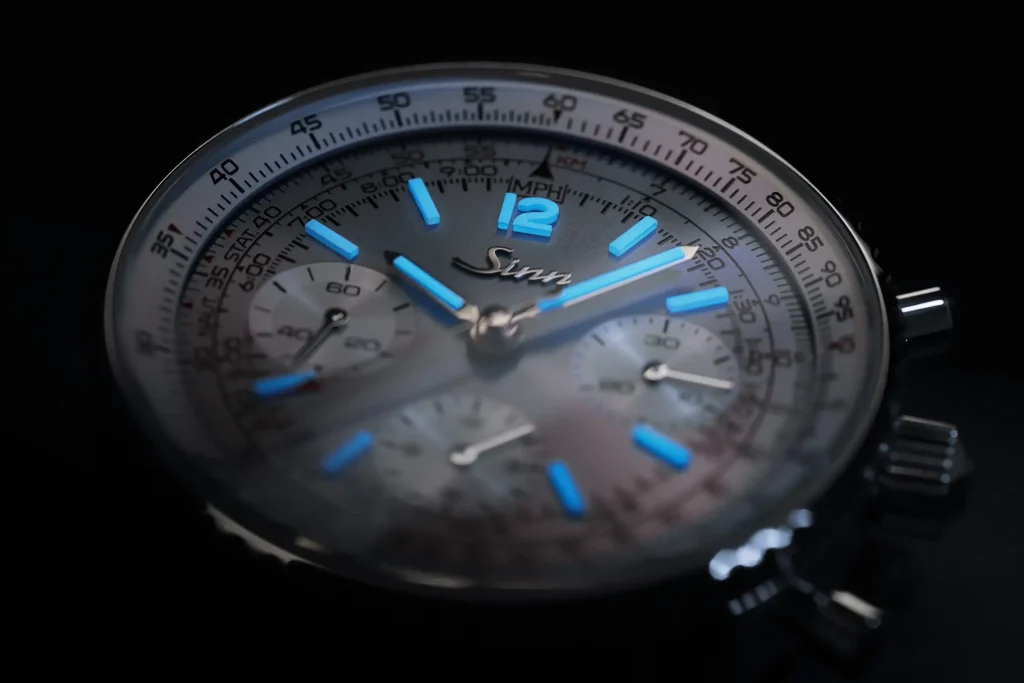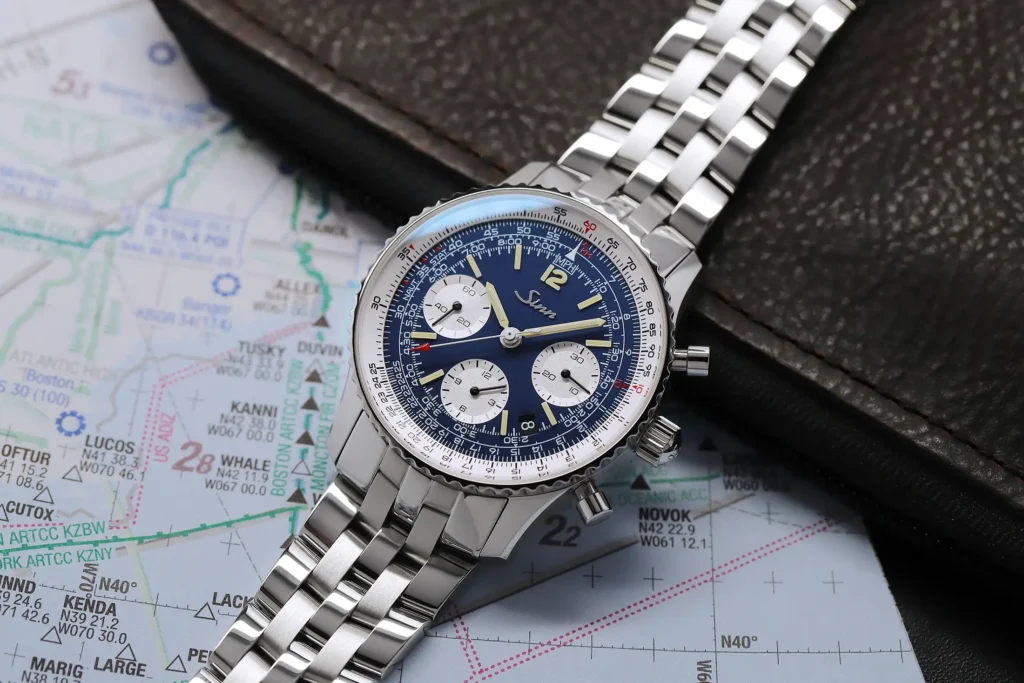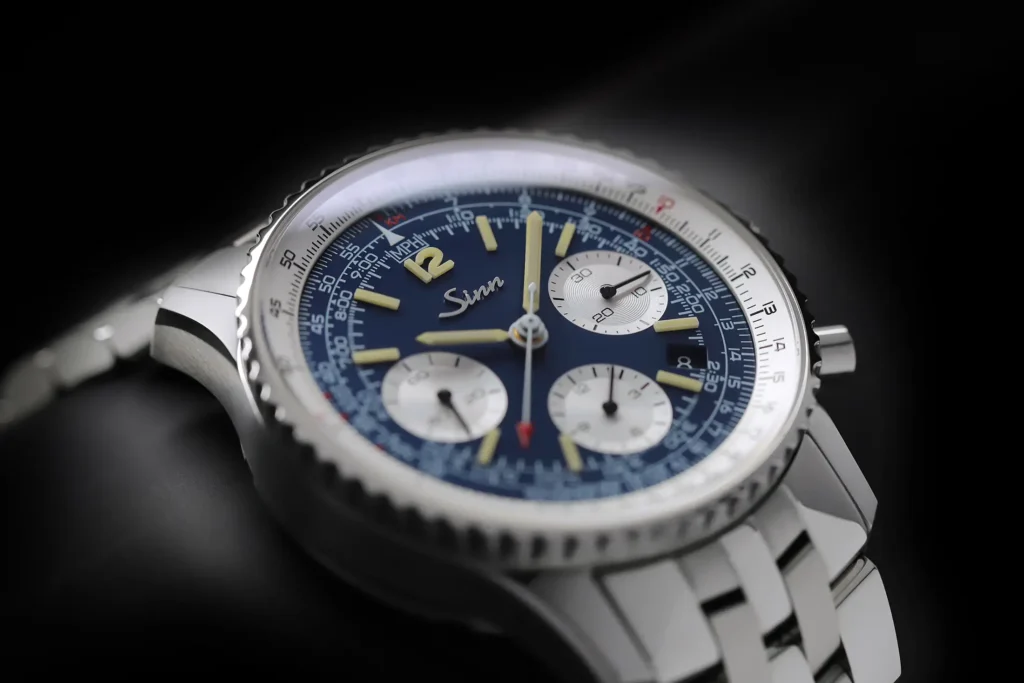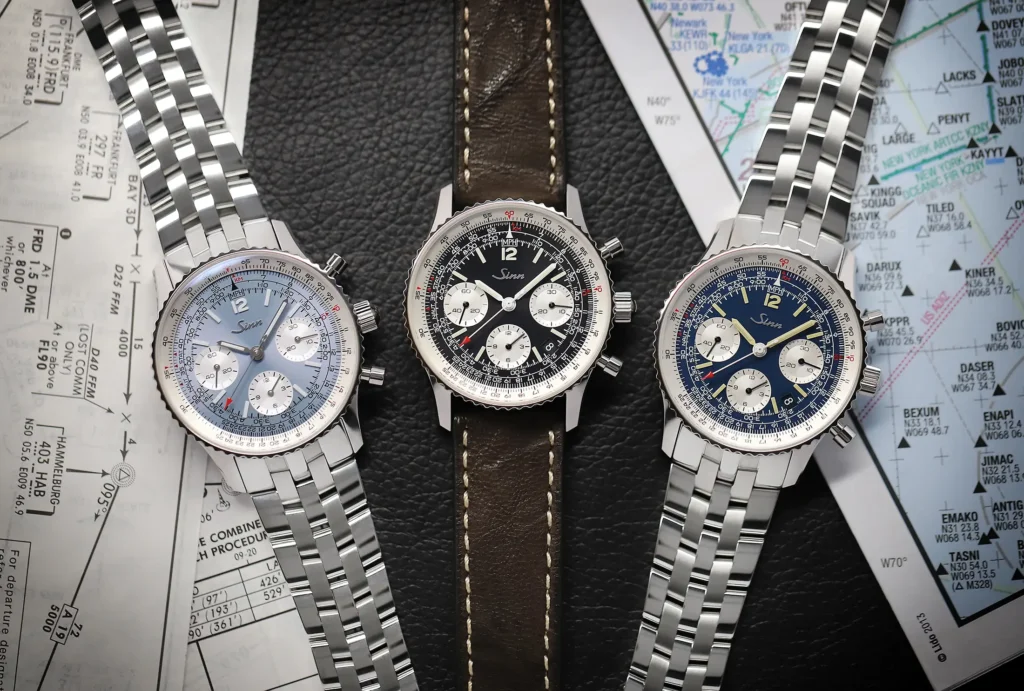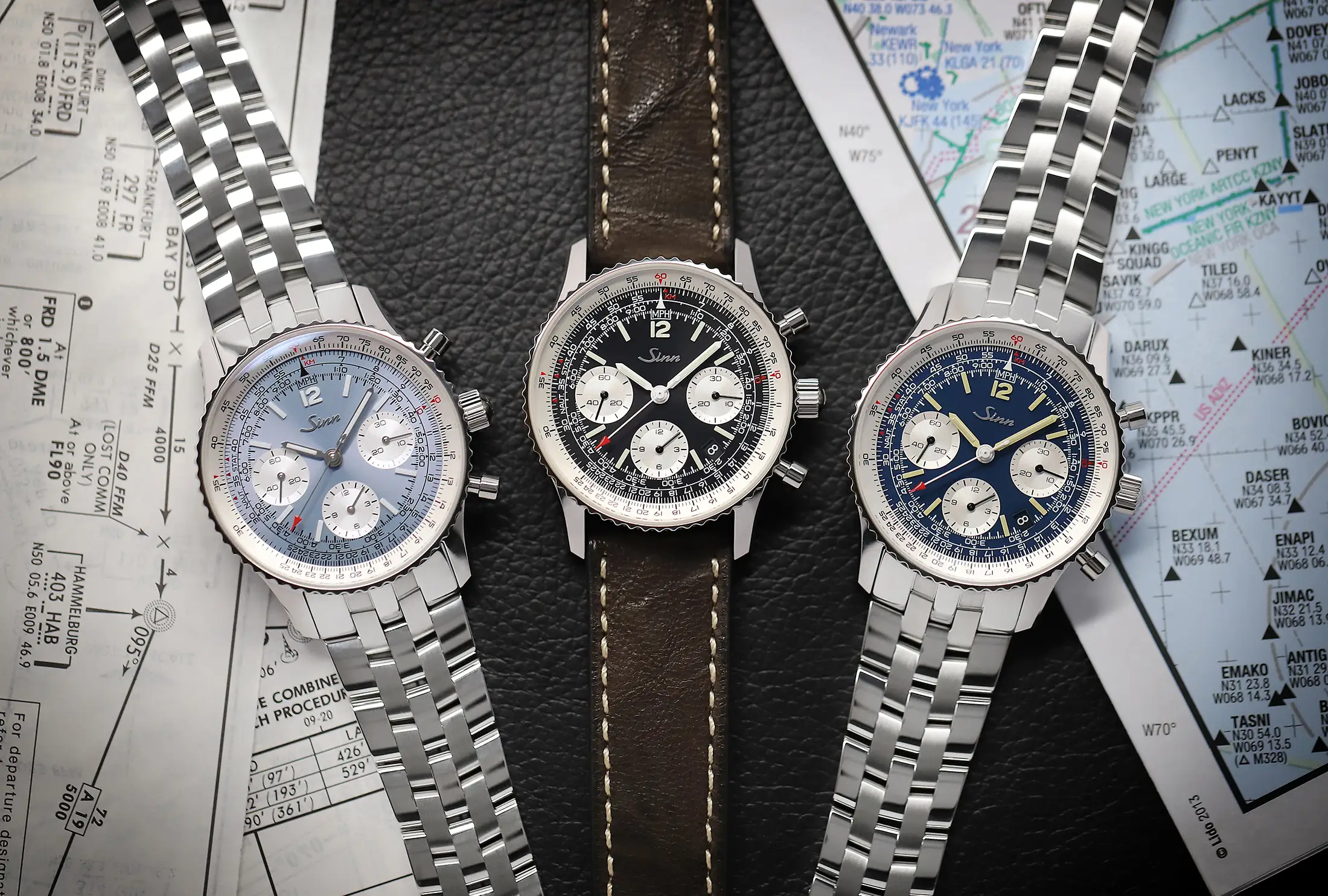Sinn’s original navigation chronograph is getting a refresh this week with a trio of new 903 references being released. The once Navitimer placeholder picks things up in familiar territory, putting the well-understood formula to use inside a revised case and dial execution bringing some practical benefits to the table in the process. These are still instantly recognizable, however, and the new 903 watches play into the history of Sinn in an important way by preserving their initial desire to work with this design in the first place. Of course, these days it runs in parallel with the modern Navitimer collection from Breitling, putting the differences between the two into direct contrast.
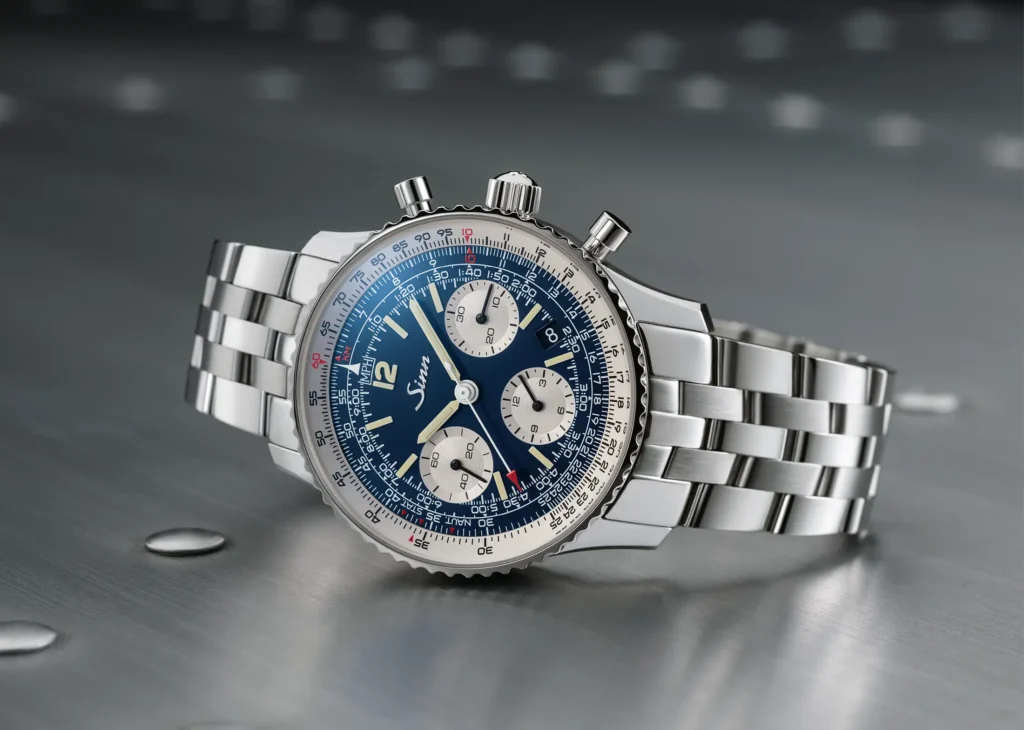
Like many of the large Swiss watch brands, the late ‘70s weren’t particularly kind to Breitling. Prior to the brand being sold outright to Ernest Schneider, rights to the Navitimer designs prior to 1979 were sold off to Sinn (Sicura and Ollech & Wajs make appearances at this stage as well, but that’s a story for another day). The German tool way manufacturer who was keen to develop a navigator’s chronograph that used a slide rule bezel with logarithmic scale used to calculate things like times, distances or fuel consumption. Such a tool was directly in Sinn’s wheelhouse, and it still is. It’s safe to say that Breitling has made a full recovery, and the modern Navitimer enjoys a fully fleshed out stable of references.
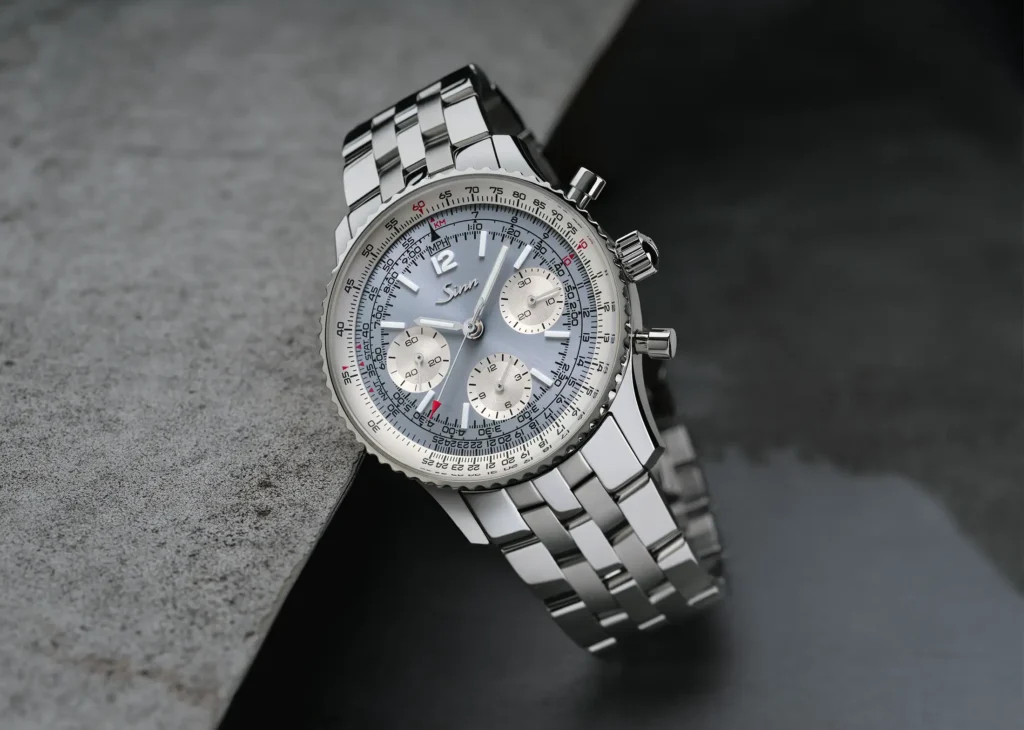
The new 903 collection brings a meaningful evolution to this classic design, highlighting Sinn’s ability to distill complexity into practical tools. There is a lot of information to wrangle within the relatively small space of the dial, much of which is relegated to the dial’s perimeter. One big change is the move to a rotating bezel that adjusts the inner portion of the rehaut, rather than relying on a separate crown mounted at 10 o’clock. This move will push the 41mm steel case into more wearable territory, though the long lug and 14.5mm thickness mean there’s still plenty of presence.
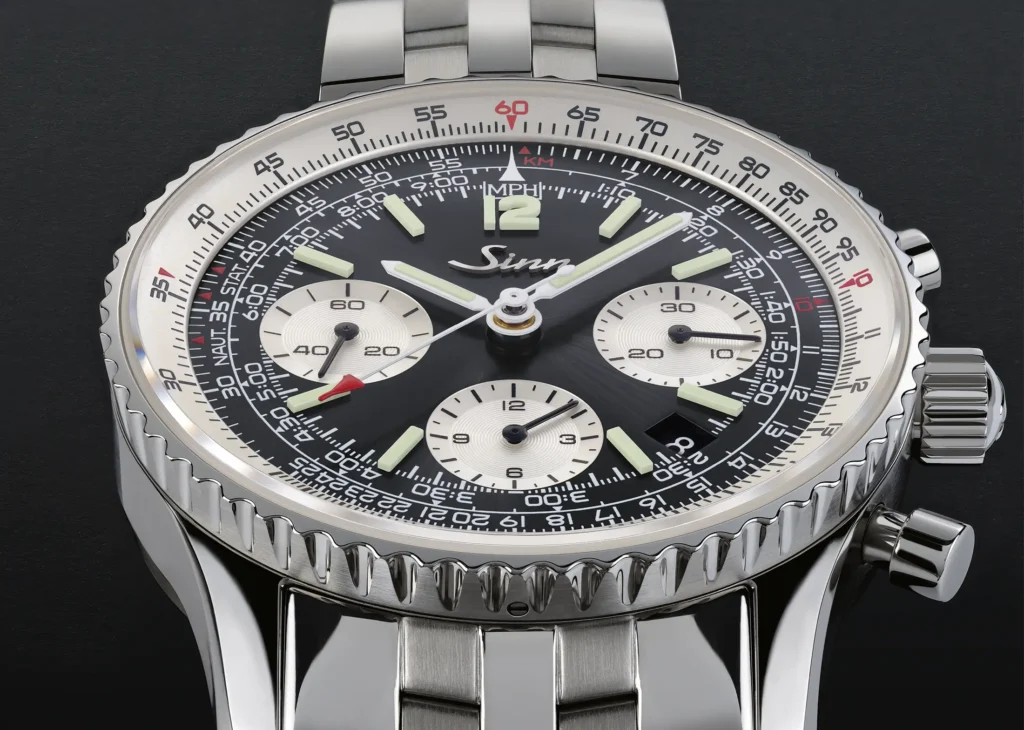
The dial features some of my favorite changes, however. There are no markings on the inner portion of the dial aside from the applied Sinn logo at 12 o’clock. Further, the hour markers are made of hybrid ceramic luminous elements and applied to the dial. It’s a similar execution to the Black Bay Pro, with luminous blocks standing tall, providing a boon to legibility without compromising the layout. The black dial of the St II, and the navy dial of the St B E II welcome a color matched date wheel tucked between the 4 and 5 o’clock hour markers, while a limited edition St HB featuring a shimmering light blue dial ditches the date altogether.
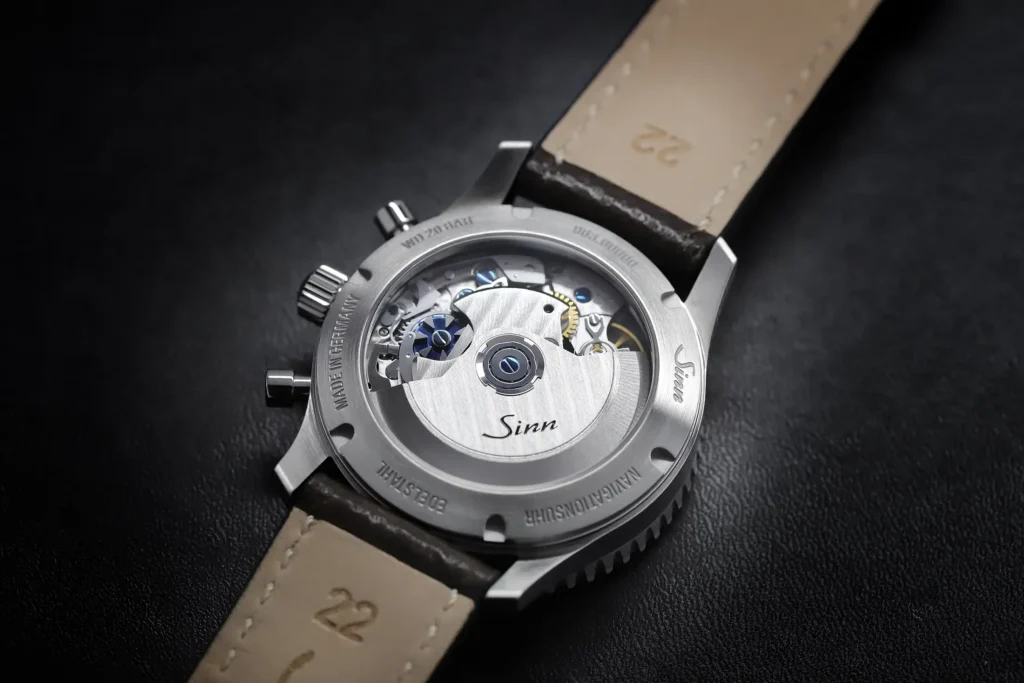
Sinn is now using the La Joux-Perret L110 automatic chronograph movement, which is visible through an exhibition caseback proudly displaying its blue column wheel actuation. This movement provides 60 hours of reserve and anti-magnetism as per DIN 8309. Overall, these new 903 references represent a more straightforward, simple take on the classic Navitimer design, and look slightly more old-school compared to the Breitling references at a glance. They are also priced a bit more attractively, with the limited St HB (500 units) priced at $4,170, and the St B E II and St II priced at $3,970 on their steel bracelets, and $3,730 on straps. Sinn




